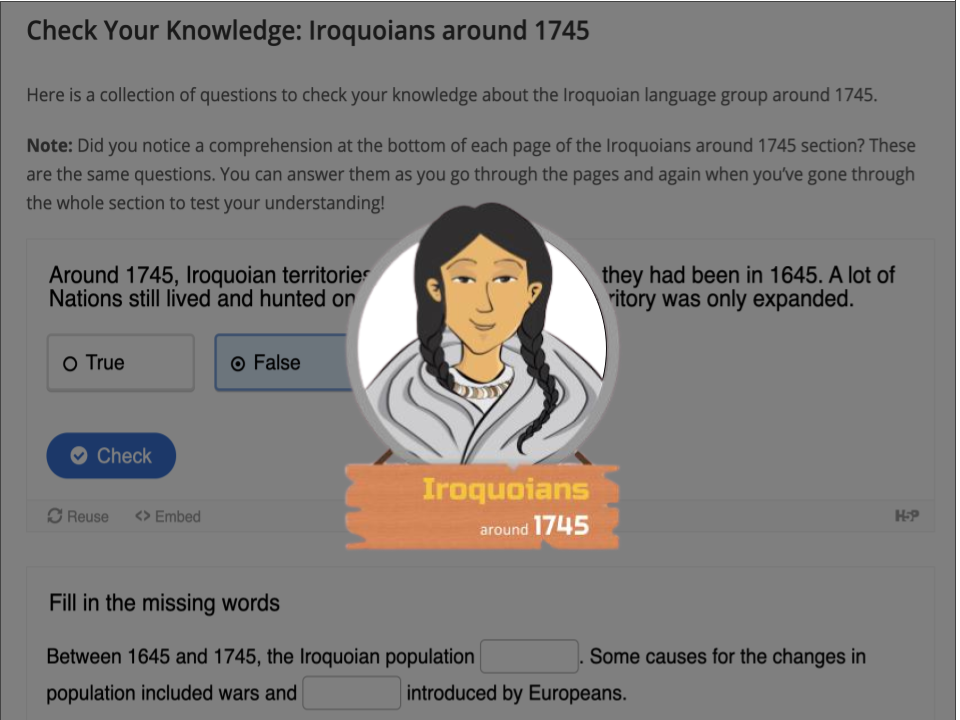Here is a collection of questions to check your knowledge about the Iroquoian language group around 1745. Note: Did you […]
Read MoreInfluences on both sides
The main modes of transportation had not changed between 1500 and 1745: the Iroquoians still travelled mostly on foot, by […]
Read MoreThe same organization, new relations
In 1745, the Iroquoians still had the same political organization as in 1500. So did the Huron and the domiciled Iroquois […]
Read MoreEconomic middlemen
Countless Indigenous peoples were involved in the fur tradeTrade is when we buy, sell, or just exchange goods (things, foods, […]
Read MoreCatholics in the St. Lawrence Valley
Most of the Haudenosaunee (now Six Nations Iroquois) and the Huron (Wendat) -Petun of the Great Lakes still practiced the […]
Read MoreEuropean products
Bartering Indigenous Peoples bartered with the French, that is to say, to exchange their furs for European products. This allowed […]
Read MoreLiving in a mission
Beginning in the 1650s, many Indigenous people who had been converted to CatholicismCatholicism – CatholicismCatholicism - Catholicism refers to the catholic religion. Catholics believe in the bible and that Jesus... refers to the catholic religion. […]
Read MoreThe Europeans
Indigenous Peoples were coming into contact with the Europeans more and more often and for all sorts of reasons. These contacts […]
Read MoreThe role of men and women
The role of women and men had not changed much between 1500 and 1745. Tasks were still divided according to […]
Read MoreKondiaronk
Kondiaronk died in Montréal just two days before the signing of the Great Peace of 1701. And yet his signature, a […]
Read MoreAbout 12,000 Iroquoians around 1745
There had been nearly 100,000 Iroquoians in 1500. By 1745, there were barely 12,000. This number included the Haudenosaunee (also known […]
Read MoreIroquoians around 1745
Around 1745, Iroquoian Nations interacted with European settlers. These interactions led to many changes. Read more by using the menu […]
Read More

